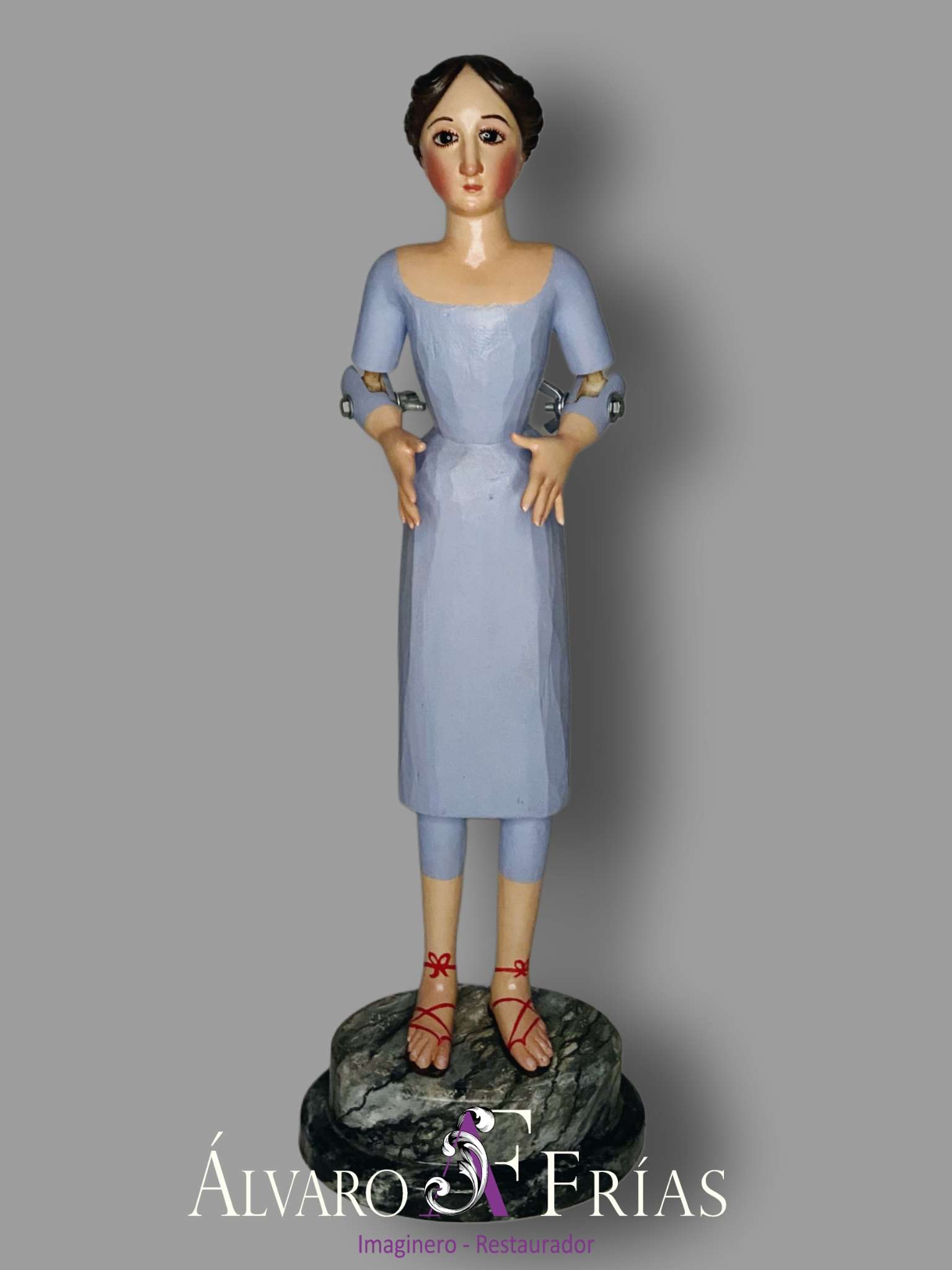This small wooden Virgin, one of those known as “cap i pota” (head and feet), was in a poor state of preservation, where humidity played a major role.
First, the wood had split open, creating two large longitudinal cracks, causing the trunk to separate from the lower section. The stucco had lost its adhesion to the support and cohesion, even disintegrating much of the image. Furthermore, the polychrome work was lifting and peeling due to humidity. The nails holding the arms together were already in an advanced stage of oxidation. It is worth mentioning the mismatched hands with the image itself.
The intervention focused first on fixing the polychrome work to prevent further detachment. After this consolidation, the work continued, removing overpaint and filler from previous interventions. All gaps were then plastered over, ensuring good adhesion. The cracks in the wood were consolidated and filled with wood paste, preventing them from recurring. Finally, at a structural level, the trunk was glued to the lower half using a dowel. Color reintegration was achieved using a water-based technique and varnish pigments.
A new set of hands, cataloged as “fork-shaped,” was also made in polymer paste and wood. In this case, the polychrome was applied in oil. The arms, also newly crafted, were made with beech wood, ball-and-socket joints at the elbow. Like the hands, they are sized in proportion to the Virgin.

